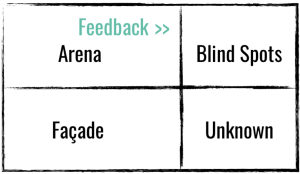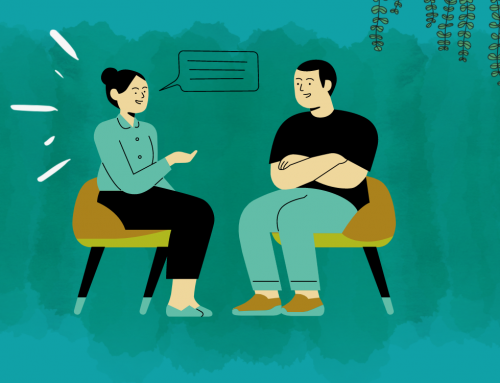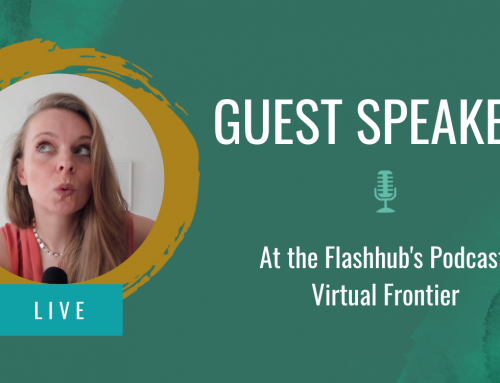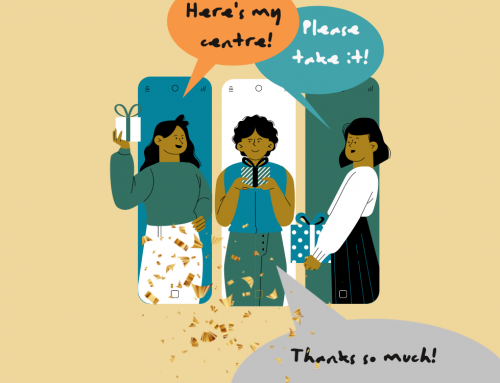Our sequel to the Johari Window video! In this video, we share questions, examples, and activities on how you can get to more self-awareness in a fast and Arc-style way.
So we all want a greater level of self-awareness and reap the benefits of being able to manifest stuff. Is there a structured way of actually getting there? Let’s see.
We thought, why not produce instructions, where we’d use one of our favorite models the Johari Window as a guideline to really come up with some incredibly juicy, heartwarming and intense questions to lead us there in a fast and ethical manner?
The Johari Window

The Johari Window is a 2×2 matrix, centred around things about yourself that are known and things that are unknown. It relates to both yourself and to others. For instance, there is your Arena – the things that both you and others know about you. There are also your Blind Spots – the things that you might well know about yourself but others don’t. There’s also your Façade – the things that you might know about yourself but that you’re not sharing with others. And there’s the Unknown – the things that neither you nor others know about you.
Why all of this?
Essentially, the idea is to have a large Arena, which is typically associated with knowing oneself well, being self-aware and open, not hiding, potentially having a large comfort zone, being more trustworthy, resilient and stable. How to get there? The idea is very simple: by getting and using feedback to decrease your Blind Spots and engaging in a process of self-disclosure through sharing the things that you’re potentially scared or ashamed of to decrease your Façade. That’s the whole magic.
If you want to learn more about this model, click here for a video.
Now let’s dive into all the questions and exercises we have prepared for today.
Disclaimer!
We are not doing therapy over here. These questions are potentially a little intense, and if you feel it’s touching upon topics that you can’t handle, that will trigger your trauma, stop this exercise and seek professional help. I’m saying this because we obviously cannot control what happens in front of the screen while you’re reading this. Just remember that this exercise is supposed to challenge you, but it’s getting a little bit too far if you are starting to feel unsafe in any way.
Shrink your blind spots through FEEDBACK

So let’s dig out some of those juicy heartwarming and intense questions for FEEDBACK!
When you mention the word ‘feedback’, most of the time what you get is rolling eyes. I find that especially regrettable because for me, personally, feedback has been one of the most insightful sources for personal growth, yet the ways it has been taught and used are just so utterly dehumanizing. The most prominent example being the annual performance review. Nobody seems to like it because nobody feels like it’s an opportunity to really sit down with someone you trust and share authentically about where you want to grow and where the other person has to grow. No. It almost never happens like that. Instead, we feel like we’re having to bear spending time with someone who we are subjected to in the hierarchy and waiting for them to tell us off. We don’t even get an opportunity to share back what triggers us about this person because of some crazy and fake power distance which we magically have to stick to. And then we even invent methods like the sandwich. We try to wrap these creepy intentions into a ‘politically correct’ conversation. And you’re even expected to say ‘thank you’, after having been bullied into that conversation by some crazy system that you haven’t even chosen to be in.
What feedback means to us
First of all, there is no positive or negative. Please, understand that any single trait of a person is context-dependent. There’re just people who resonate in a way that makes them feel uncomfortable (or comfortable) with you. Of course, that might say something about you but mainly says something about them.
What we do in authentic feedback is disclosing ourselves in an accountable manner, and the receiver can decide what they wanna do with that information themselves. We can’t tell anyone ‘The Truth’. The most we can do is to share how we feel about a certain behavior, how we experience our truth, filtered by our feelings. Understanding that and being able to communicate that in a precise way is quite an art.
An example of bullsh** feedback
Bullsh** feedback would be, for instance, someone saying
“In that meeting your voice could have been more determined”
For me, what this person really is saying: ‘I got triggered by your voice! It made me feel anxious, angry, tense…’ – we don’t actually know how exactly it made them feel – ‘and because I want to win that client and be a good boss…’ – we also don’t know what exactly they want – ‘I really really really want you to speak in a way that makes me believe that you are more determined, so that I don’t have to go through those terrible feelings of anxiety, anger, tension…’ – whatever it is – ‘and I’m using this formulation of ‘could have been’ to simulate that I’m actually polite, but what I’m really saying is that if you don’t speak in a way that makes me believe that you’re really determined, you’re not gonna get a great evaluation here’.
Saying ‘your voice could have been more determined’ is exactly the kind of feedback that messes with people because it makes them feel inadequate. I know, most bosses don’t have bad intentions with this. Frankly, they might just have the wrong skill set. I plead ‘guilty’ myself, I’m a boss and I’ve probably made mistakes with this. I acknowledge that bosses have been wounded by their own bosses and by their overloaded agendas, but, as a result of this, they are still wounding people and it’s a huge problem.
How we suggest you do it:
You say something along the lines of
“In that meeting, you said X (Step 1) and that triggered a lot of anxiety in me (Step 2). What I would have needed and expected from you was for you to speak in a voice that sounds more determined for me, which in my world means that you have to speak a bit more slowly and with a greater amount of calm because I really wanted to win over that client and I believe to have observed that your tension spilled over to our customer and made her doubt her purchase (Step 3). I cannot give you a good evaluation unless you learn to master that skill (Step 4).”
Do you feel that difference? This is feedback given by someone who understands that feedbacking someone else is not a way of exerting power but an honest conversation about self-disclosure.
And by the way, was there any sandwich necessary? No. Because there’s no good and bad, no guilty and innocent in this particular conversation. And this is also the point where suddenly it makes sense to say ‘thank you’ because you’re thanking not so much for someone blowing off steam, but for someone having the courage to express their anxiety in front of you.
Let’s do a quick summary of what these steps are:
‘T’ is for a Triggering situation: Maybe you can’t even think of one at the time. Sometimes we just have vague emotions and, if that’s happening, it’s also ok.
‘E’ is for Emotions: Name how that trigger makes you feel and if that’s something you’re struggling with, just remember that it’s one of the four: fear, anger, sadness or joy. Saying something like, ‘I feel you’re stupid’ – that’s not an emotion, that’s a thought, okay? ‘I feel you’re very unprofessional’ – that’s not an emotion, that’s a thought. ‘I feel anxious because you look unprofessional’ – that is an emotion.
S stands for Story: Share the story that your brain is telling you about the cause and effect and the mechanisms that are going on in your world. For instance, you can share something like, ‘I really wanted that client and, in my world, we have to speak in a way that looks determined to induce trust on the other side and, therefore, help them to make a positive purchasing decision’.
And ‘C’ stands for Consequences: In my opinion, it’s more optional than necessary. Basically, you share what happens if nothing changes. For instance, in this particular example, you could say, ‘look, if I’ll continue to feel anxious whenever I let you pitch, there’s no way you’re going to get a good evaluation’.
The other person can respond and I’d love ‘thank you’ to be the first response for a simple reason: if we respond by being defensive, arguing or telling other people off that their perception is somewhat flawed, we are not exactly encouraging them to be sincere the next time. You can follow up your response using exactly the same structure: ‘T’ for Triggering event (what phrase exactly was it that resonated with you in a comfortable or uncomfortable way), ‘E’ for Emotions (how did it make you feel?), ‘S’ for Story (what story is your brain telling you about that particular combination of triggering event, emotions and whatever context you feel you’re having) and ‘C’ for Consequences (what consequences would you or the other person experience if nothing changes).
I guess it could be called a ‘TESC‘ structure (we’ve made this up).
Your own stories
Maybe you too have your own stories about feedback being super useful versus feedback being honest but tough but also liberating. I’m so curious to hear them and to learn from your stories and maybe you will inspire someone else, so do dare to share your experiences in the comments below. Chances are you’re just gonna be met with a lot of empathy.
Shrink your façade through SELF-DISCLOSURE
 We’ve already used this word in a way that your feedback partner is disclosing themselves to you by giving you feedback, now it’s about how you can disclose yourself to them. For a lot of people, this is actually the scarier part for two simple reasons:
We’ve already used this word in a way that your feedback partner is disclosing themselves to you by giving you feedback, now it’s about how you can disclose yourself to them. For a lot of people, this is actually the scarier part for two simple reasons:
(1) oftentimes the level to which we dislike ourselves is way higher than the level at which other people dislike us or get triggered by us
(2) you can’t hide anymore. If you follow the feedback model as we suggested, any uncomfortable truth that could potentially surface, might still just be the perception of the other person, so you can still say, ‘yeah but that’s not me, that’s just what YOU got triggered by’. When you are disclosing yourself, you can’t use that backdoor anymore. You can’t blame someone else’s perception for you having all that ugly truth.
First of all, let me motivate you.
We often struggle to share our most embarrassing secrets, our darkness, our own ruins. Sometimes we sincerely and utterly dislike and maybe even hate ourselves and we find it so incomprehensible that someone else will like us. However, and I probably don’t have to tell you this, when you share something that’s hard, when you’re being vulnerable, what we are being met with is so many times is an overwhelming wave of love and empathy. Why? Think about it, it’s so easy: by daring to share something that makes you imperfect, that makes you less of a machine, so to say, you are giving permission to others to also accept and allow in their own imperfections.
So, is there a model like TESC, which you can apply to get some structured results? Actually, I don’t think so. For me this would be overburdening the process that is pretty deep, so I thought I’d rather give you a couple of questions that have worked for us and a couple of best practices on how your partner can behave to make this difficult process a little bit easier for you. And, trust me, if you’re doing it right, it’s likely to be quite difficult.
Disclaimer
These questions might really annoy, trigger, even repel you. They are the ones that just work for us. If you are not liking them, feel free to make up your own questions.
Questions for self-disclosure:
What do you pretend?
How are you hurting? What have you been ashamed of?
How is the energy you need to invest in hiding compromising other areas of your life?
What needs to be let go of? (I think this is a really important one)
What needs to heal?
We’ve put these and a few more questions into the guide, which you can download by clicking here
To your partner
My advice is: listen. Not just with your ears but with your whole body and pay attention to the emotions that are popping up. Why? Oftentimes when we are hiding, we’re not just hiding a story from others, oftentimes we are also numbing the emotions related to that story within us. As an example, imagine someone who has been running away from a very very deep but very very old grief. This feeling might be so old that they’ve unlearned to actually cry about it and yet that’s kind of stuck. It’s the one thing they don’t want anyone to know about them, how much they’re still grieving. As the listener you might actually experience how you feel the urge to cry yourself or, at least, you have a big lump somewhere in your tummy. Did you ever experience that situation where you were talking to a friend and your friend started to cry and, as a result of that, you understood how much you’re hurting yourself? Yeah. Basically, that’s what we’re talking about. As a listener, you give permission to the person in front of you to reveal whatever they need to reveal.
And hey, maybe even your own story pops up. Chances are that your feelings are going to be related to a story that’s happened in your life, so it’s like the perfect opportunity for you to go next.
Remember, it’s not just about crying
Yes, we’ve used an example where someone cries but the goal of the exercise is not to make anyone cry. There are a lot of emotions and there’re also happy emotions. We chose this particular example but I wouldn’t call this exercise successful only if you end up in tears. The goal is actually to have a deep conversation and new insights.
A free guide and more
Congratulations for having made it so far because I understand it’s a lot of information and, as I’ve mentioned before, we have actually produced a guide which summarizes the Johari Window in more depth as well as all the questions and principles that have been mentioned in this video.
However, if you want to get started for real, dare to sign up for a coffee chat with us. These are our 45 to 60 minute coaching conversations where one of our Arc team members will be on the phone with you and dig deep into how the heck you can use your biggest talents passions and values to build something in your life that inspires yourself and others, what’s potentially holding you back and whether The Arc is the best partner for you to fuel your personal growth.
Let’s get started with my free coaching from The Arc:
And last but not least, if you know someone in your circle of friends or at work or wherever who is this really authentic and interesting person, do dare to share this post with them and maybe someone will come back to have a Johari Window conversation with you and you can have a lot of fun. Of course, if you have any questions regarding the Johari Window or regarding the conversation guide, comment below and we will answer whenever we have time.
With these words, I’m wishing you an amazing rest of the day. Bye bye!






